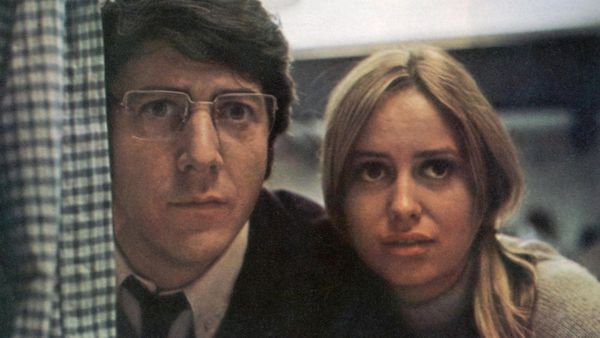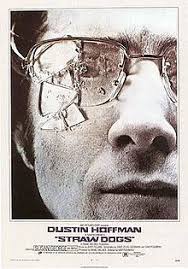Eye For Film >> Movies >> Straw Dogs (1971) Blu-Ray Review

Sam Peckinpah’s violent and controversial masterpiece Straw Dogs gets a re-release on its 40th anniversary. Fremantle have ensured that the film comes with a decent helping of extras for Peckinpah aficionados.
As is to be expected from a film of relative age, the picture isn't as sharp and crisp as recently filmed Blu-Ray releases. However, it is cleaner and brighter than previous editions, ensuring Dustin Hoffman and Susan George look even more terrified than before. The audio commentaries are provided by Katy Haber, Peckinpah’s close friend and PA, and a trio of Peckinpah experts.

Unfortunately there’s not a whole lot of Peckinpah in the extras, but that’s to be expected considering his death in 1984. You do, however, get a feel for the legendary and divisive director through interviews with George and producer Dan Melnick. It is slightly disappointing that Hoffman isn’t involved, though.
George’s interview is particularly enthralling - bursting with anecdotal gems. The best of which involves the moment she found out that she’d got the part. She’d been called to Peckinpah’s office: the door is ajar and voices are raised – should she go in? She does. Melnick, Peckinpah and Hoffman are having a barny of epic proportions - shouting, screaming, arms flailing everywhere. They don’t notice her. She averts her eyes to the ground and begins to back out. It’s only then she realises that all three have their trousers around their ankles. They're all hanging loose - dignity be damned. Peckinpah says “Welcome”.
George and Melnick are both polite and respectful to Peckinpah and Hoffman, but it’s clear that the shoot was testing. Hoffman’s method acting, Peckinpah’s confrontational manner and the infamous rape scene all proving troubesome. Peckinpah even demanded that George and Hoffman live together for two weeks prior to the shoot, with David Z Goodman (the writer) following their every move, taking notes on the interaction between the two. Peckinpah’s aggressive directorial style (Melnick says Peckinpah ‘provoked’ performances from the actors) and well-publicised alcohol dependency, which threatened to derail the shoot, are also discussed. Both, ultimately, seem to revere Peckinpah’s unique genius though, and seemed more than willing to bend the rules for the maverick filmmaker.
The on-location documentary is crudely filmed in black and white by a shockingly amateur British crew. Yet it offers us an insight to Peckinpah’s brilliant mind. His witty ripostes to some of the silly questions from the interviewer are pure gold. Interviewer: “The West Country people are portrayed as insular and inbred, is this how you found them?” Peckinpah: “No I’ve met insular and inbred people all over the world, I wouldn’t confine them to the ‘West Country’. In fact some come from my own family. We’re all a bit inbred.”
It’s all too brief, but Peckinpah is great fun to watch. The British presenter is unintentionally hilarious, whether that’s with his dull witted questions, or his bewilderment at the use of manufactured fog on set. Fake fog?!? In the West Country!?! Shucks, I guess that’s the movie business.
Finally, there is plenty of background material to the film, including information on its battles with censorship and the BBFC and scathing critical reviews. More interestingly than those, are transcripts of letters exchanged between Peckinpah and our very own Harold Pinter. Peckinpah asked Pinter to have a look at the script and provide a British perspective on it. Pinter, in a deliciously typical letter, calls the film "an abomination". Peckinpah says: "Of course... that’s the point, isn’t it?" Great stuff.
Reviewed on: 28 Oct 2011
















